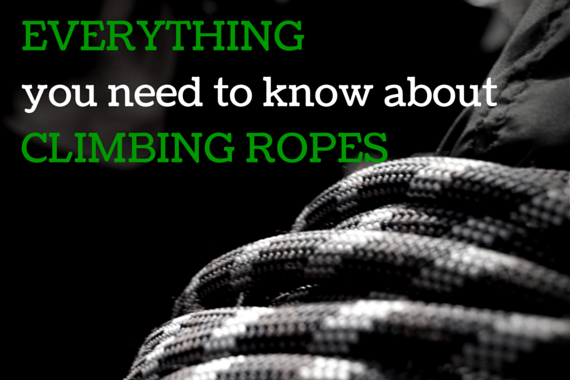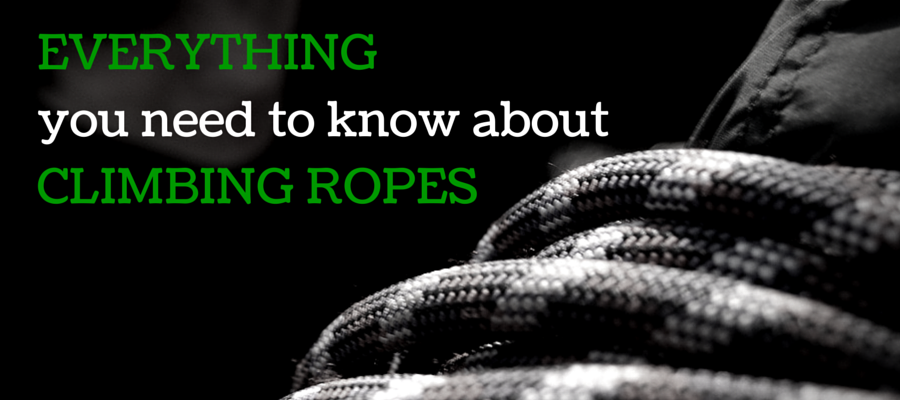
With the warm months’ arrival and boulder temps long gone, climbers everywhere start their summer migration into rope climbing. A lot of questions have been popping up about what we need to know about climbing ropes as of late, so let me string you along through some information and opinions. Important vocab words are bolded and underlined, just like your middle school science textbook …
Basics:
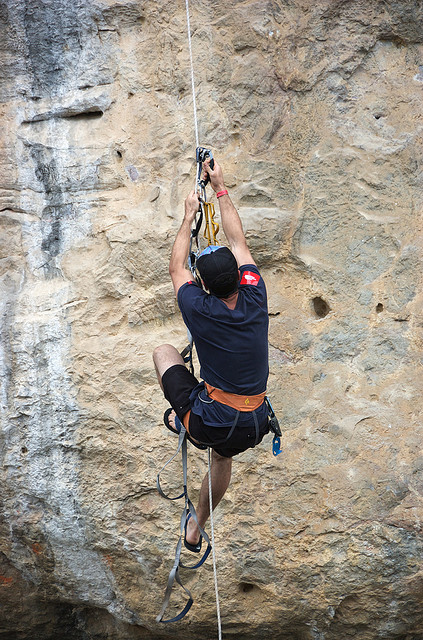
A climber jugging up a static rope line. Photo: Maria Ly
Static ropes* are your normal “hardware store” style rope with no stretch. Sometimes static ropes are used by climbers for rappelling, hauling loads, or cleaning rock.
Dynamic ropes stretch and have a slight “bungee” affect, which absorbs the force climbers make when the rope catches their weight.
Length:
At this day in age,
60 meter ropes are the norm. This length will get you to the top and down most outdoor routes. If a climb is over 60 meters it will usually mention it in a guidebook or other climbing beta. If a climb looks really tall and you have no beta, I would rather avoid it that day then spend the rest of my days without walking …
70 meter ropes are very common, especially at sport climbing destinations such as The Red River Gorge, Rifle, or most European limestone crags. Another advantage of having a 70 meter rope is that you can chop 5 meters off each end of the rope once the high friction areas wear.
50 meter ropes are often used to cut down weight on bigger walls and alpine adventures. Also many times, 50 meter ropes are used for moderate top-roping; think summer camps or outdoor guiding.
30 meter ropes serve as a gym rope, and are commonly used in mountaineering ventures.
Related: The Essential Guide to Buying Your First Climbing Rope
Dry vs. non-dry:
Dry ropes
Dry ropes are treated to repel water, and are more expensive. Popular with ice climbers, alpine, mountaineering, and big wall climbers, or those people that show up at the crag even though it’s raining. The dry treatment eventually wears off, but it does prolong the life of your rope. Some ropes even have a double dry treatment.
Non-dry ropes
Non-dry ropes are … you ready? … NOT dry treated. A normal rope will soak up water like a sponge. Wet ropes can still be climbed on, but it will feel like someone tied a gallon of pain to your rope. Rappelling or a wet rope tends to be a little more exciting due to having less friction.
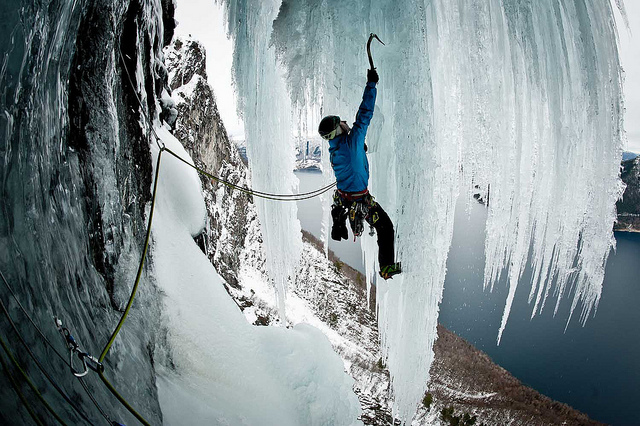
You definitely want this rope to be dry-treated … Photo: Thomas Senf
Related: Climbing Rope Management During Rappel
Double Ropes:
Double ropes are used for very wandering routes, or situations where sharper rock could cost you a tear**. Double ropes come in 2 further divisions:
Half Ropes
Half ropes are meant to catch one at a time, more for wandering protection.
Twin Ropes
Twin Ropes are meant to catch and be clipped together, used for sharp rock.
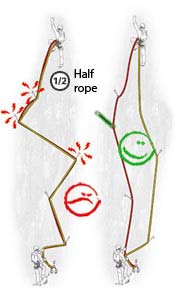
Images: Beal Planet
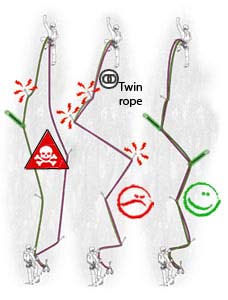
Diameter:
Everyone has a different opinion on the thickness of the rope …
I see it as: 10mm tends to be the standard, any thicker and it’s considered a thick heavier-duty rope. Likewise, thinner tend to be considered thin and light. Thicker spectrum ropes will last longer and are usually a bit cheaper. But thinner ropes help you send your proj bruh.
My rope can only take 8 falls?
You may have noticed an UIAA (International Climbing and Mountaineering Federation) fall rating on on your rope, which is a surprisingly low number. You can fall on your rope more than that. The rating is designed for bigger falls which you probably won’t take. You can read about the tests on the UIAA website.
Take care of your rope and your rope will take care of you:
1. Always do your C.A.L.C.***
- Keep your rope clean to make it last longer.
- Alternate ends of the rope when used repeatedly, as the rope slowly tightens back up after a fall.
- Look over / inspect your rope frequently.
- Cut highly warn ends off your rope (remember / write down the new length!).
Related: The Most Simple Way to Clean a Dirty Climbing Rope
2. Always coil your rope loosely when finished and flake before climbing!
Sander from Moja Gear demonstrates how to coil your rope:
Footnotes:
* Don’t climb on this.
** Rare occasion where this can be a verb or a noun.
*** Making up acronyms makes you sound legit.
Ready to get your own rope? See our Rope Buying Guide for assistance and recommendations.

